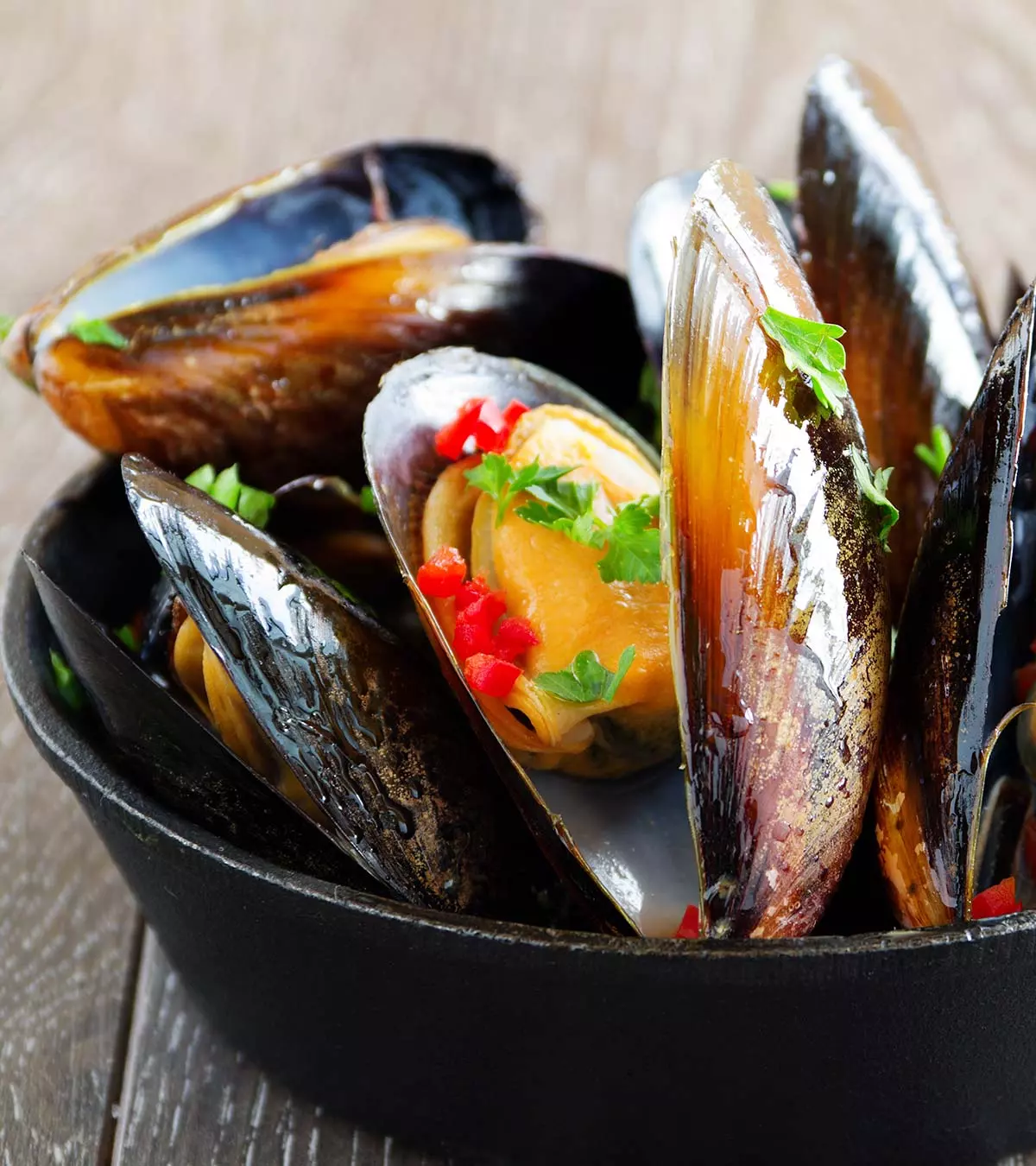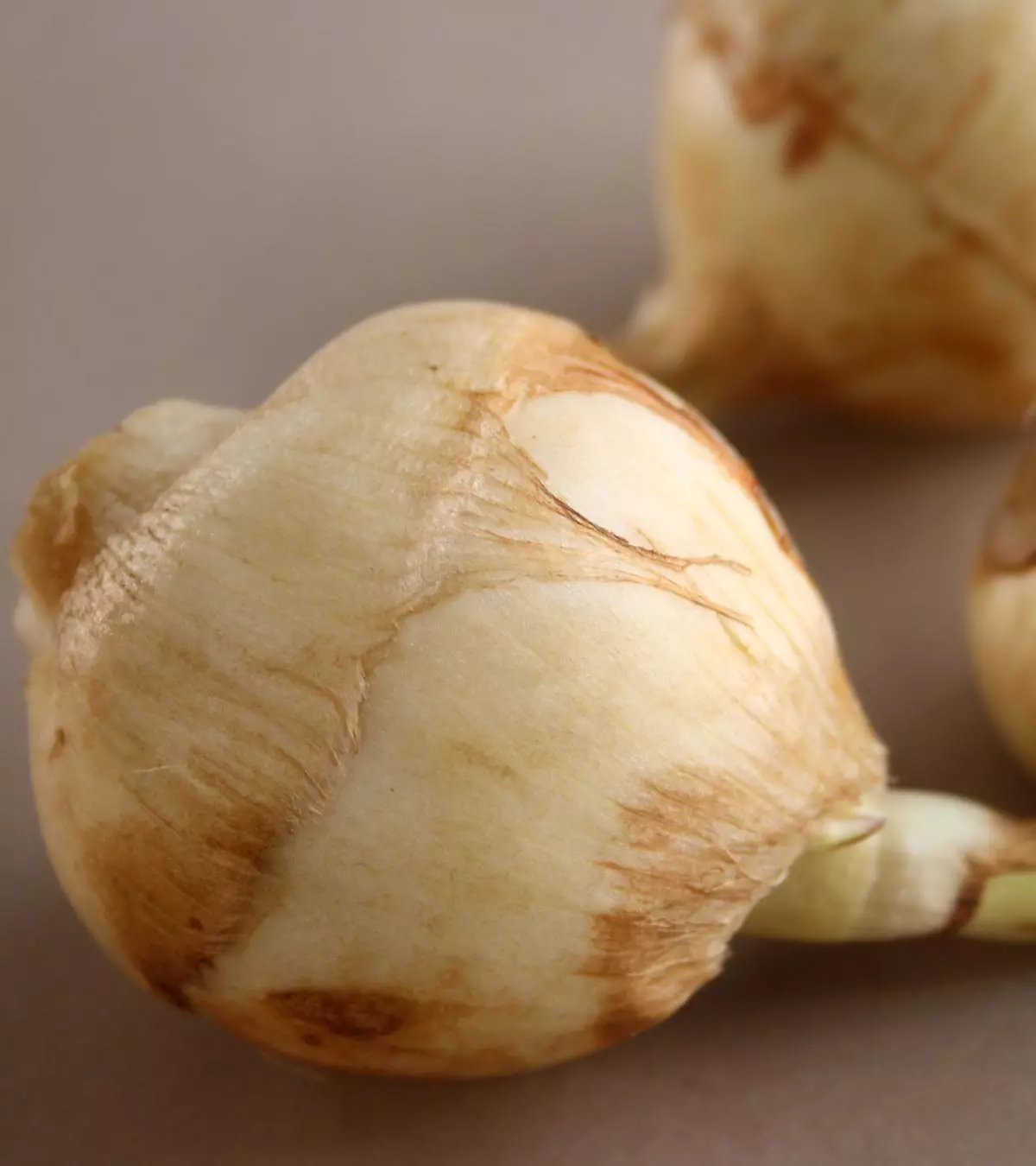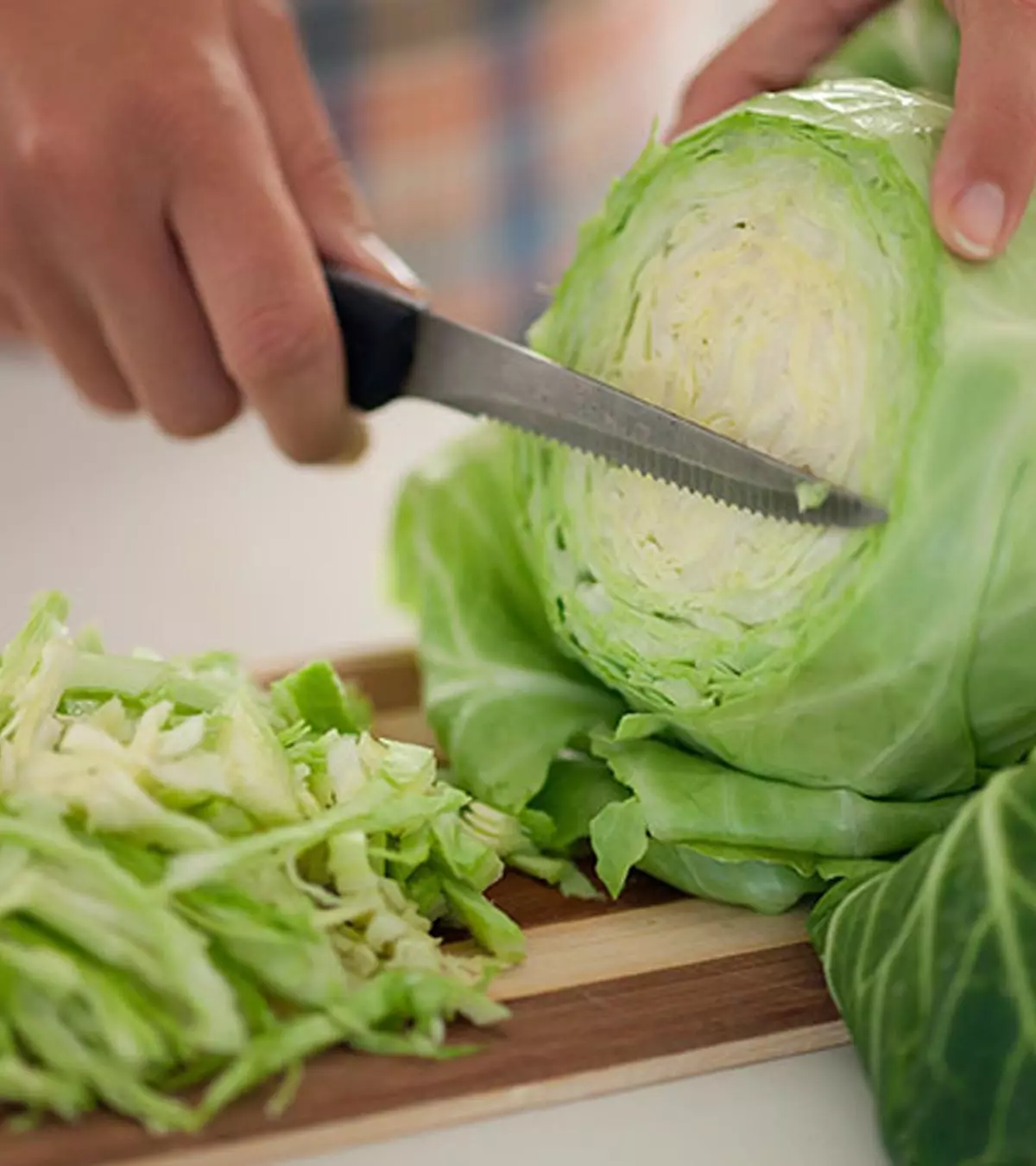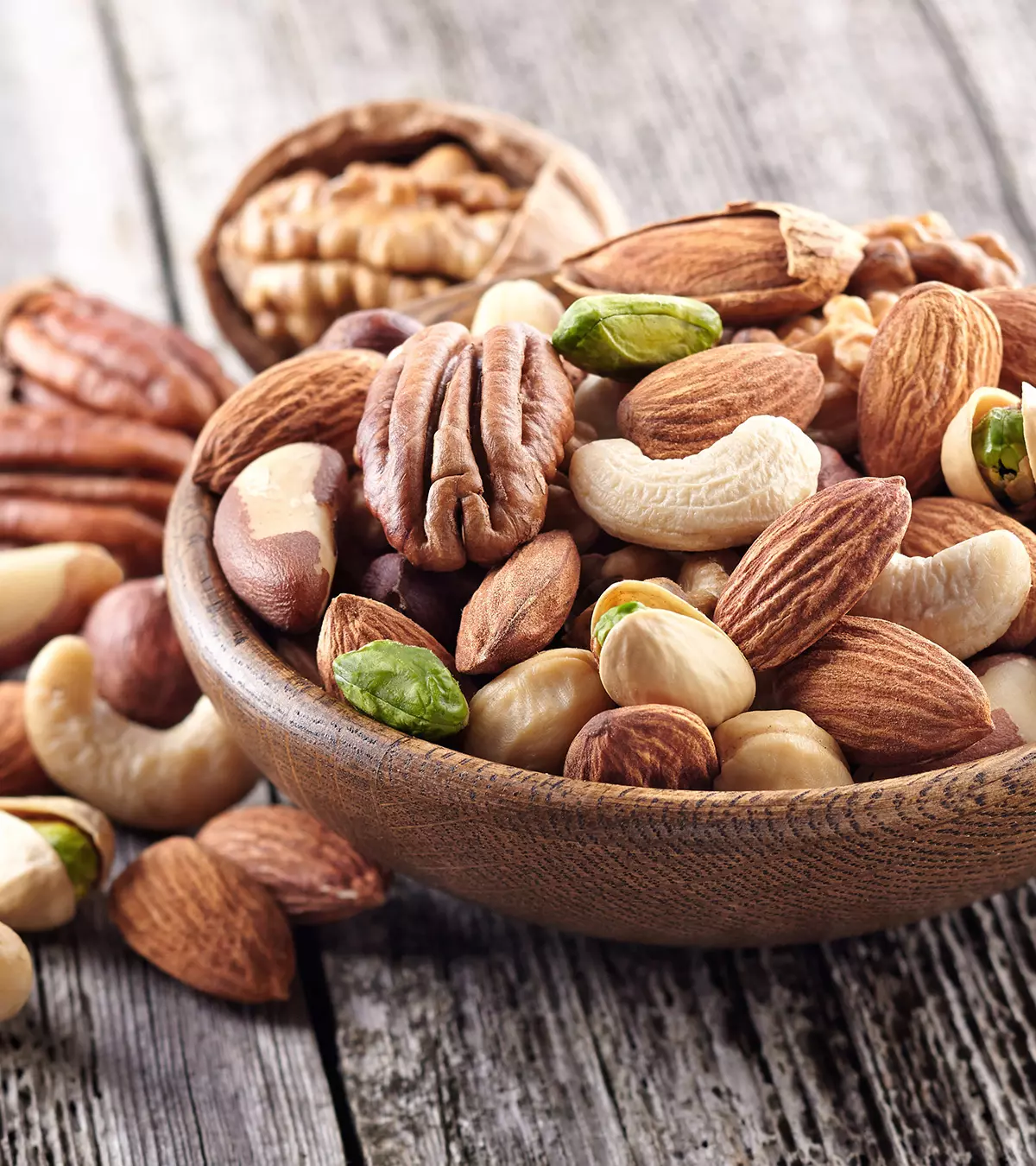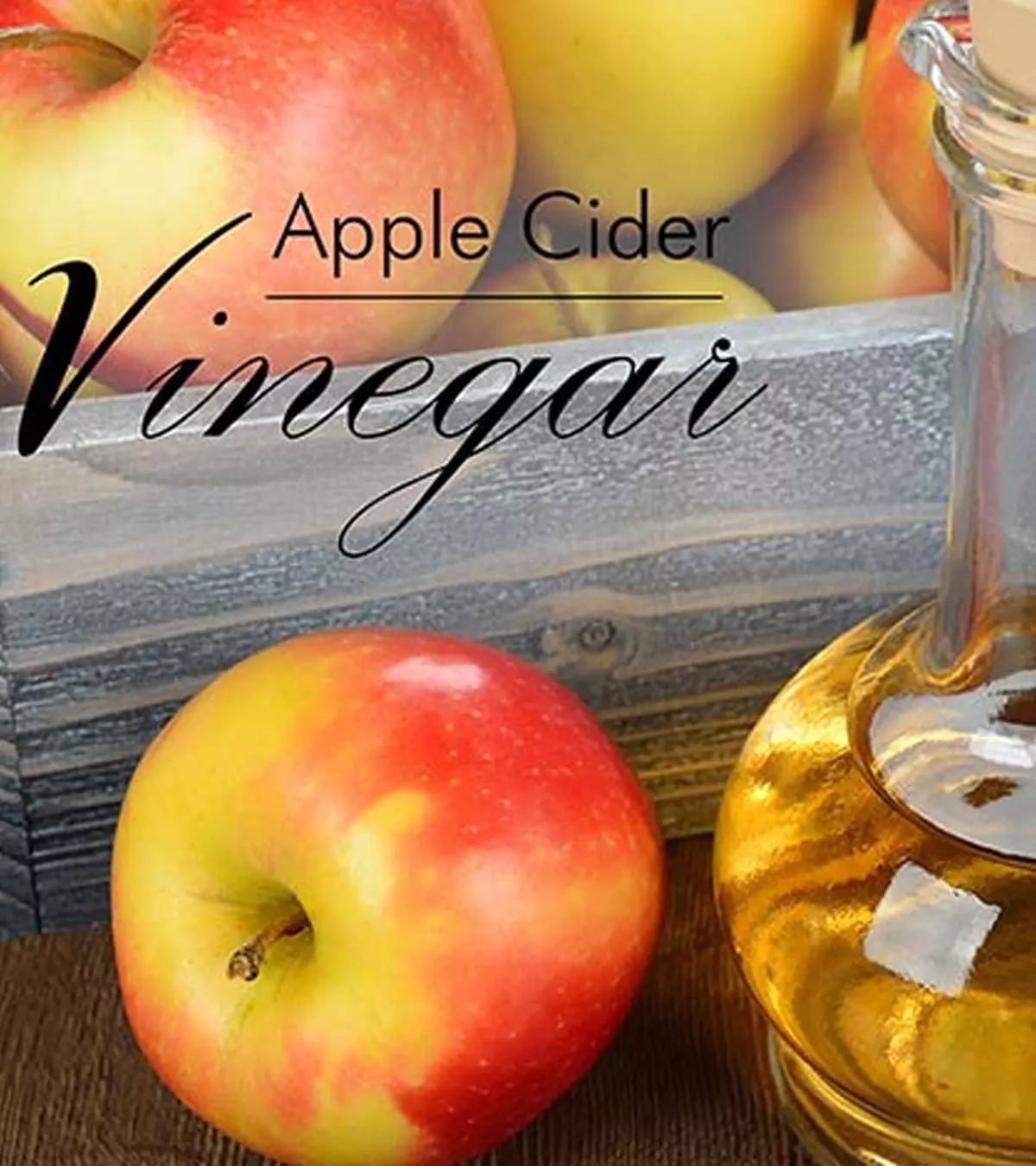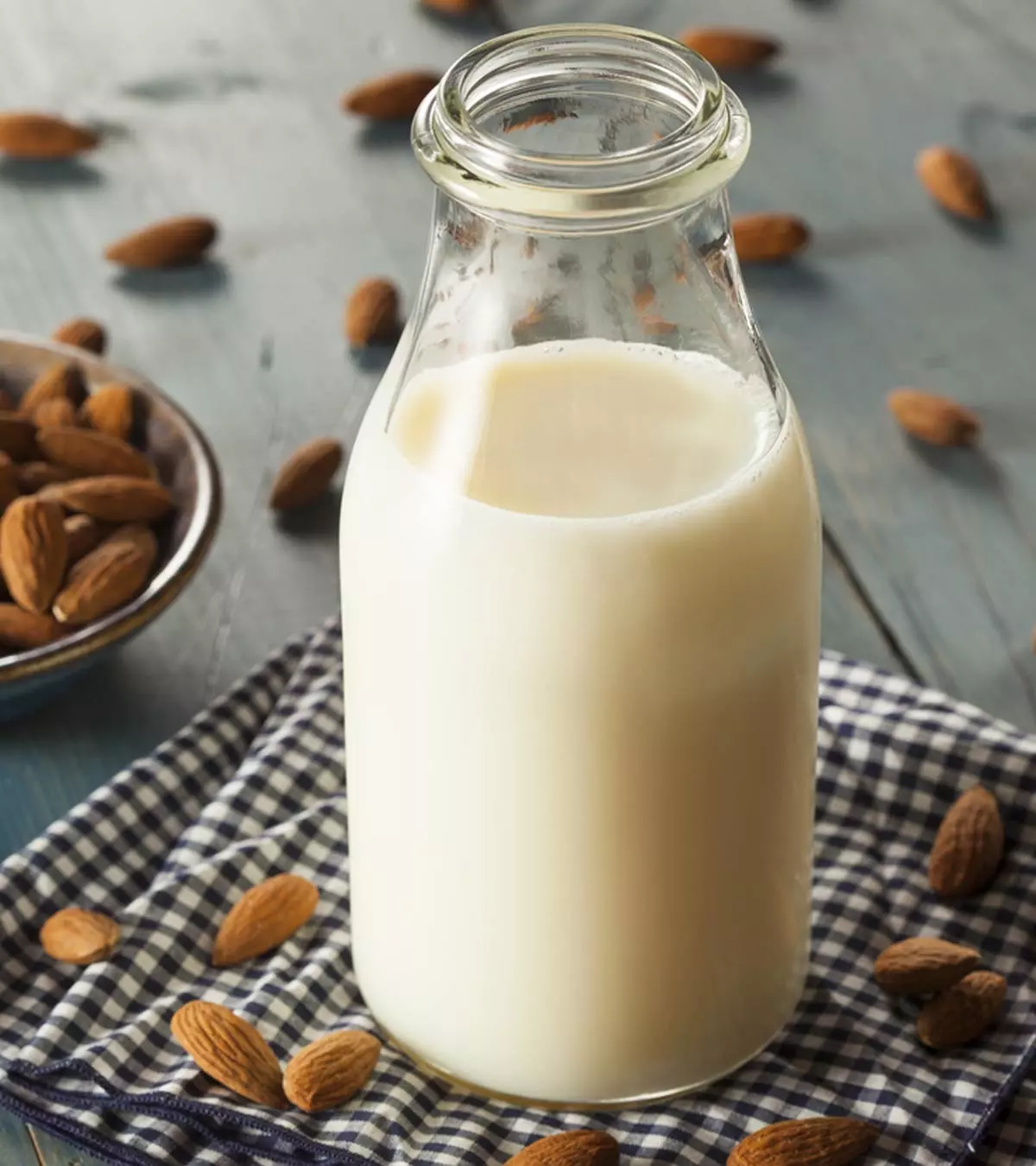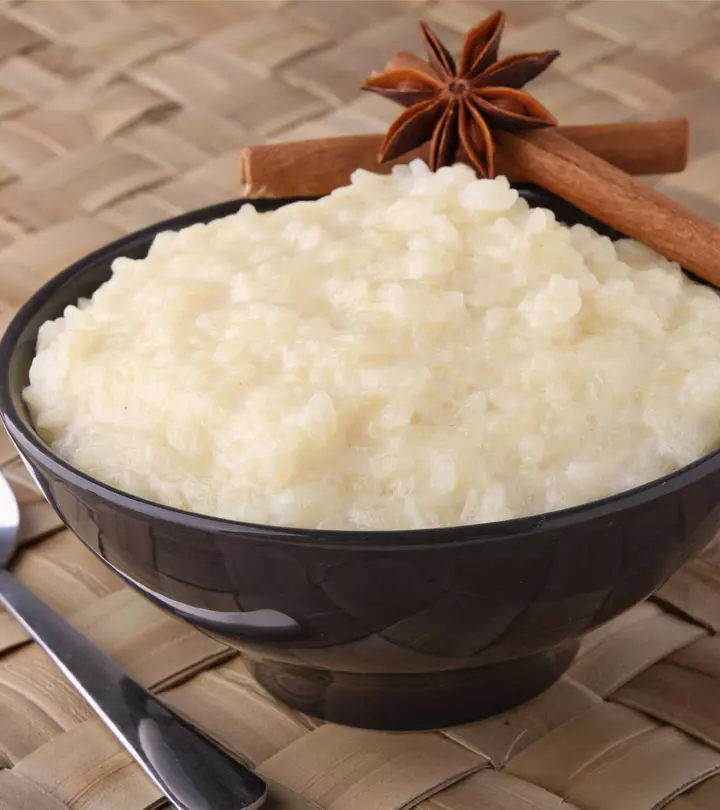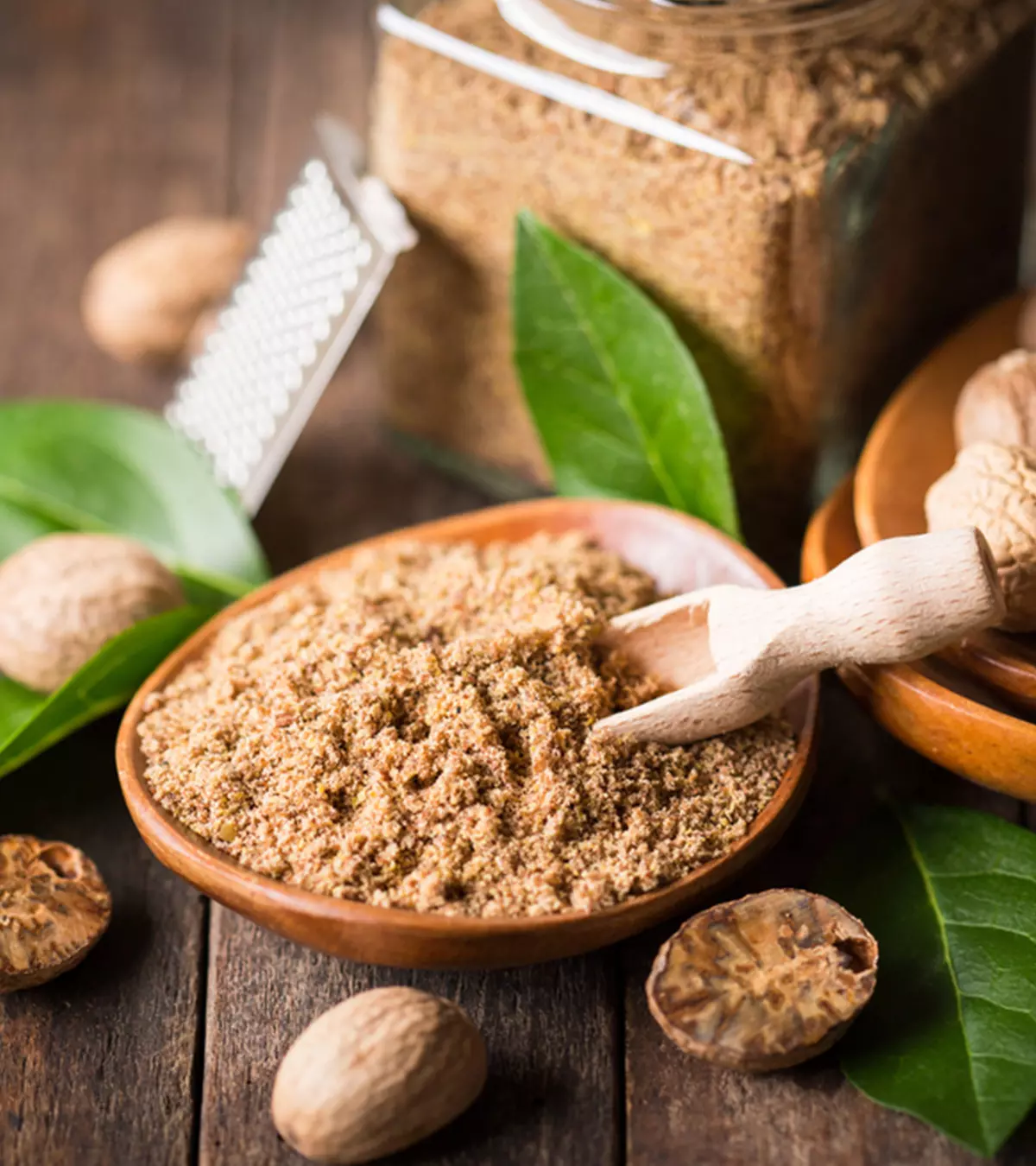
Image: Midjourney/ MomJunction Design Team
Dragon fruit for babies is a good choice, provided you feed it to them at the right age and in age-appropriate ways

. Grown and consumed worldwide, dragon fruit usually has a thick, red-colored outer skin with green scales and a soft pulp with several tiny, edible seeds (1). Also, its pulp can be white, pink, yellow, or deep red, depending on the variety.
The fruit has a sweet-sour taste and soft, juicy texture, making it a good choice for babies. In addition, it contains several nutrients and bioactive compounds that can promote a baby’s overall health. Scroll down to read more about dragon fruit’s possible health benefits, nutritional value, and age-appropriate ways to feed it to your baby.
Key Pointers
- Babies eating various solids can consume dragon fruit in puree and mash forms.
- Dragon fruit is rich in nutrients, such as vitamin C and several bioactive compoundsiChemicals found in fruits and vegetables that possess antimicrobial and antioxidant properties , including polyphenols and betalainsiWater-soluble nitrogen-containing compounds that provide red or violet color to some fruits and vegetables .
- Feeding dragon fruit can keep babies’ immunity robust and their digestive system active.
When Can Babies Begin Eating Dragon Fruit?
Ripe dragon fruit has a soft, easy-to-swallow pulp that most babies can begin eating from six months of age. You can introduce dragon fruit pulp as smooth, lump-free puree or mash. Once the baby is comfortably digesting the fruit, you may add it to other foods, such as porridge. You can feed peeled, thick dragon fruit pulp quarters as healthy finger food around nine to ten months of age.
Then, at around 12 months, you can gradually begin serving bite-sized, thin dragon fruit wedges or pieces as the baby’s pincer graspiA type of grasp in babies that engages the index finger and thumb to hold an object improves. Since dragon fruit without peel can be slightly slippery, it can be a choking hazard. So, stay alert and monitor your infant when they are self-feeding dragon fruit.
 Quick fact
Quick factNutritional Value Of Dragon Fruit
Dragon fruit is a cacti fruit rich in nutrients, such as vitamin C and phosphorus. Besides, it contains several bioactive compounds that could contribute to overall health. The fruit’s nutrient composition is somewhat variable, from variety to variety.
100 grams of dragon fruit (Hylocereus undatus) with red peel and white pulp can offer the following nutrients to the baby (2) (3):
| Nutrients | Amount | AI |
| Water | 89% | – |
| Fiber | 0.3g | – |
| Calcium | 6mg | 260mg |
| Phosphorus | 19mg | 275mg |
| Iron | 0.4mg | 11mg (RDA) |
| Thiamine | 0.2mg | 0.3mg |
| Vitamin C (Ascorbic acid) | 25mg | 50mg |
Source: University of Florida and USDAAI = Adequate intake – nutrient level assumed to ensure nutritional adequacy
Possible Health Benefits Of Dragon Fruit For Babies
Below are some of the possible health benefits that your baby could reap by consuming dragon fruit as a part of a well-balanced diet.
- Proper eye and skin development: Dragon fruit pulp and seeds contain vital nutrients, such as PUFA (polyunsaturated fatty acidsiEssential fats that are majorly found in plants, nuts, and seeds and help cell growth and brain development ), vitamin A and C, phosphorus, calcium, and iron. These nutrients can contribute to the baby’s overall growth and development (1). For instance, vitamin A (beta-carotene) in dragon fruit can support healthy eye and skin development, whereas phosphorus can help maintain electrolyte balanceiA balance in the levels of sodium, potassium, chloride, and bicarbonate in the blood and bone health.
- Healthy digestive system: A healthy gut is a prerequisite for effective food digestion and nutrient absorption. Consuming dragon fruit can offer ample water and fiber to help achieve a healthy gut. While fiber and water together can regulate bowel movement and beat constipation, fiber can also act as a prebiotic (1) (4). PrebioticsiCompounds that improve overall health by acting as food for the good bacteria present in the human gut boost gut microflora (probioticsiLive bacteria and yeast naturally present in the gut and fermented foods, beneficial for intestinal health ), which impart several long-term health benefits.
- Robust immune system: Vitamin A (beta- carotene) and C, betalains, and polyphenolsiNaturally occurring antioxidant compounds found in food items such as fruits, vegetables, coffee, tea, and wine are several compounds in dragon fruit that possess antioxidant properties (5). AntioxidantsiSubstances that may prevent or slow down some types of cell damage caused due to harmful molecules called free radicals are compounds that combat free radical damage and enhance an individual’s immunity.
- Hydration: Dragon fruit may help keep babies hydrated because it has a high water content. This makes it a good choice, especially during warm weather.
Besides these, dragon fruit intake, especially red dragon fruit, may boost an infant’s iron levels as it contains more iron than other varieties (5).
Precautions To Take While Feeding Dragon Fruit To Babies
Feeding dragon fruit in age-appropriate ways with basic precautions can ensure your baby enjoys its benefits with minimal concerns. Here are some precautions to adhere to when feeding dragon fruit to babies.
- Choose ripe and fresh dragon fruit. Peel the fruit and introduce the pulp to your baby in smooth, lump-free puree or mash form.
- When starting with fruit puree for babies, add a small amount – about a teaspoon or two – to a meal. If your baby tolerates the dragon fruit puree well, you can slowly increase the quantity to a tablespoon or two. As the baby develops the fruit’s taste and digestibility, feed dragon fruit to your baby in various ways.
- Follow a “three to five-day wait” rule to eliminate the possibility of food allergy or intolerance.
- If the baby seems uncomfortable after ingesting the fruit, discontinue feeding for the time being. Reintroduce the fruit in the diet after two to three days. If the problem persists, consult a pediatrician.
- Allergy to dragon fruit is rare but possible. Allergic reactions, such as itching of the mouth, urticariaiA skin rash characterized by itching, reddish discoloration, and bumps , and vomiting, may appear immediately or a few minutes after touching or eating the fruit (6).
- If your baby has a family history of food allergies or oral allergy syndrome, especially with kiwi, then consult your healthcare provider before introducing dragon fruit to your baby.
- Avoid over-feeding dragon fruit to babies and toddlers to avert gastrointestinal issues, such as bloating and diarrhea, which may happen in sensitive babies. Also, overeating dragon fruit can quickly fill the baby’s tummy, making them skip the next meal.
- Give bite-sized, graspable chunks of dragon fruit to babies as finger foods. As the babies grow, serve thin dragon fruit slices or wedges to toddlers.
Most people eat dragon fruit fresh. However, you may use its frozen pulp to make sorbet and ice cream at home. Dried dragon fruit chips and chunks are also an option.
Tasty And Healthy Dragon Fruit Recipes For Babies And Toddlers
Here are some easy dragon fruit recipes you can try for babies and toddlers.
1. Dragon fruit puree (6+ months)

You will need:
- ½ pink dragon fruit
- 1tsp breast milk or formula (optional)
How to prepare:
- Deskin the dragon fruit and scoop its pulp.
- Blend the pulp into a smooth, lump-free puree using a blender or food processor.
- Transfer the puree to a bowl and feed the baby. If the puree seems thick, adjust its consistency using formula or breast milk.
 Quick tip
Quick tip2. Dragon fruit and pineapple sorbet (8+ months)

You will need:
- 1 ripe pink-fleshed dragon fruit (peeled and chopped)
- ½ tbsp fresh lemon juice
- 1tsp brown sugar
How to prepare:
- Blend all the ingredients into a smooth-flowing puree using a blender. Ensure no lumps are present.
- Pour the puree into an ice cream maker and churn until it is frozen. Alternately, you can freeze the puree for at least two hours.
- Once the sorbet is ready, keep it at room temperature for ten minutes to make its consistency ideal for feeding babies.
3. Dragon fruit parfait (10+ months)

You will need:
- 1 cup white or pink-fleshed dragon fruit (deskinned and diced into graspable pieces)
- 1 cup unsweetened Greek yogurt
- ½ cup frozen strawberries (diced into graspable pieces)
- ½ frozen banana (diced into graspable pieces)
- 1tsp chia seeds
How to prepare:
- Put the yogurt in a bowl and add chia seeds to it. Let the bowl sit in the refrigerator for 30 minutes to let the seeds swell.
- Add fruits into the bowl and give a gentle toss until everything mixes well. The parfait is ready.
- Feed it to your baby immediately, or chill it for 15 to 20 minutes before serving. For a more nutritious meal, you may want to add other seasonal fruits such as apples, apricots, avocados, and grapes, as well as papaya, mango, peach, or pear.
4. Dragon fruit smoothie (12+ months)

You will need:
- 1 cup unsweetened almond milk
- ½ cup white-fleshed dragon fruit
- 1tsp organic honey
- 1tsp dried fruit powder
How to prepare:
- Put all the ingredients into a blender and blend well. Ensure the smoothie is smooth-flowing with no lumps.
- Pour the smoothie into a mason jar or glass and serve it to your toddler.
 Quick tip
Quick tipDragon fruit is a juicy and pulpy fruit with a refreshing taste. Its nutrient profile makes it a healthy food choice for babies. Start by feeding it to your babies in the form of purees, following a three to five-day rule to check if your baby is allergic to the fruit. However, discontinue feeding it if your baby shows any intolerance to it. Over time, you may start to feed dragon fruit to babies as finger foods if they enjoy its taste.
Infographic: What Do Different Colored Dragon Fruits Taste Like?
Dragon fruit is a beautiful, juicy fruit with unique textured pulp and peel. What makes it more interesting is that the fruit comes in different colors and accordingly changes its taste. So explore the different types of dragon fruit through this infographic and add color and flavor to your child’s healthy snacks.
Some thing wrong with infographic shortcode. please verify shortcode syntaxFrequently Asked Questions
1. Does dragon fruit increase weight?
Dragon fruit is rich in fiber and naturally fat-free. It keeps one full between meals and might not lead to weight gain when eaten in moderation (7).
2. Is red dragon fruit better than white?
Red dragon fruit is believed to be healthier as it is richer in iron than white dragon fruit and may help increase hemoglobin and erythrocyte levels (8).
3. Does dragon fruit change stool color?
Yes, red dragon fruit might give a pinkish or reddish tint to stool. However, it is a temporary change, and the poop color changes once dragon fruit is out of your system.
Illustration: Dragon Fruit For Babies: Benefits Precautions And Recipes
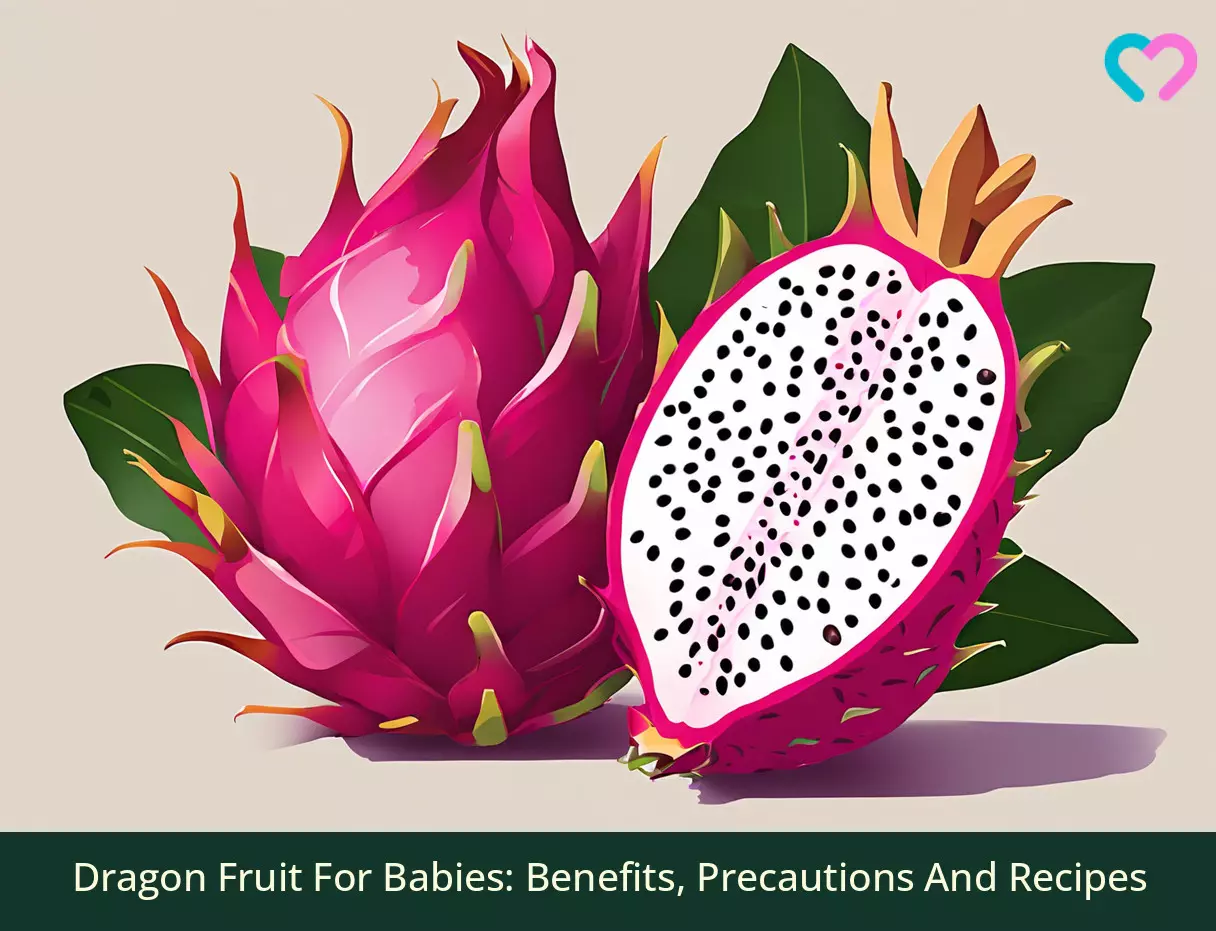
Image: Stable Diffusion/MomJunction Design Team
Delicious and healthy baby food recipes for dragon fruit puree! Learn six easy-to-make and nutritious dragon fruit purees for babies 6 months and up.
References
1. Madhuri Shrikant Sonawane; Nutritive and medicinal value of dragon fruit; The Asian Journal Of Horticulture
2. Pitaya (Dragonfruit) Growing in the Florida Home Landscape; University of Florida
3. Dietary Guidelines for Americans 2025-2025; USDA
4. Pissared Khuituan et al; Prebiotic oligosaccharides from dragon fruits alter gut motility in mice; NCBI
5. Md. Farid Hossain et al.; Cultivation, Nutritional Value and Health Benefits of Dragon Fruit (Hylocereus spp.): A Review; International Journal of Horticultural Science and Technology.
6. Andreas Kleinheinz et al.; Anaphylactic reaction to (mixed) fruit juice containing dragon fruit; The Journal Of Allergy And Clinical Immunology
7. DRAGON FRUIT; The US Department of Agriculture
8. MADHURI SHRIKANT SONAWANE; Nutritive and medicinal value of dragon fruit; The Asian Journal of Horticulture
9. Dragon Fruit; USDA
Community Experiences
Join the conversation and become a part of our nurturing community! Share your stories, experiences, and insights to connect with fellow parents.
Read full bio of Jyoti Benjamin
- Alicia Chacha Miller is a registered dietitian specializing in maternal and pediatric nutrition. She holds an MS in Nutrition Science from the University of Southern California and founded Cardamom Nutrition.
 Alicia Chacha Miller is a registered dietitian specializing in maternal and pediatric nutrition. She holds an MS in Nutrition Science from the University of Southern California and founded Cardamom Nutrition.
Alicia Chacha Miller is a registered dietitian specializing in maternal and pediatric nutrition. She holds an MS in Nutrition Science from the University of Southern California and founded Cardamom Nutrition.
Read full bio of Swati Patwal
Read full bio of Rohit Garoo
Read full bio of Ghazia Shah






